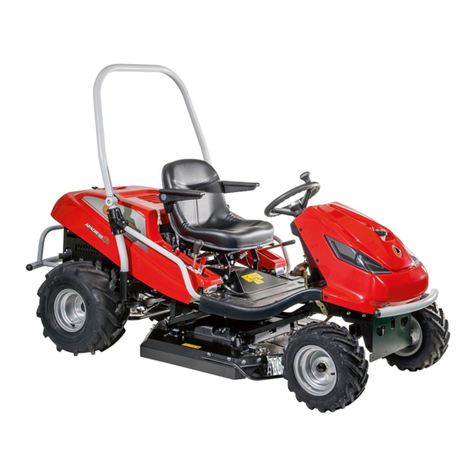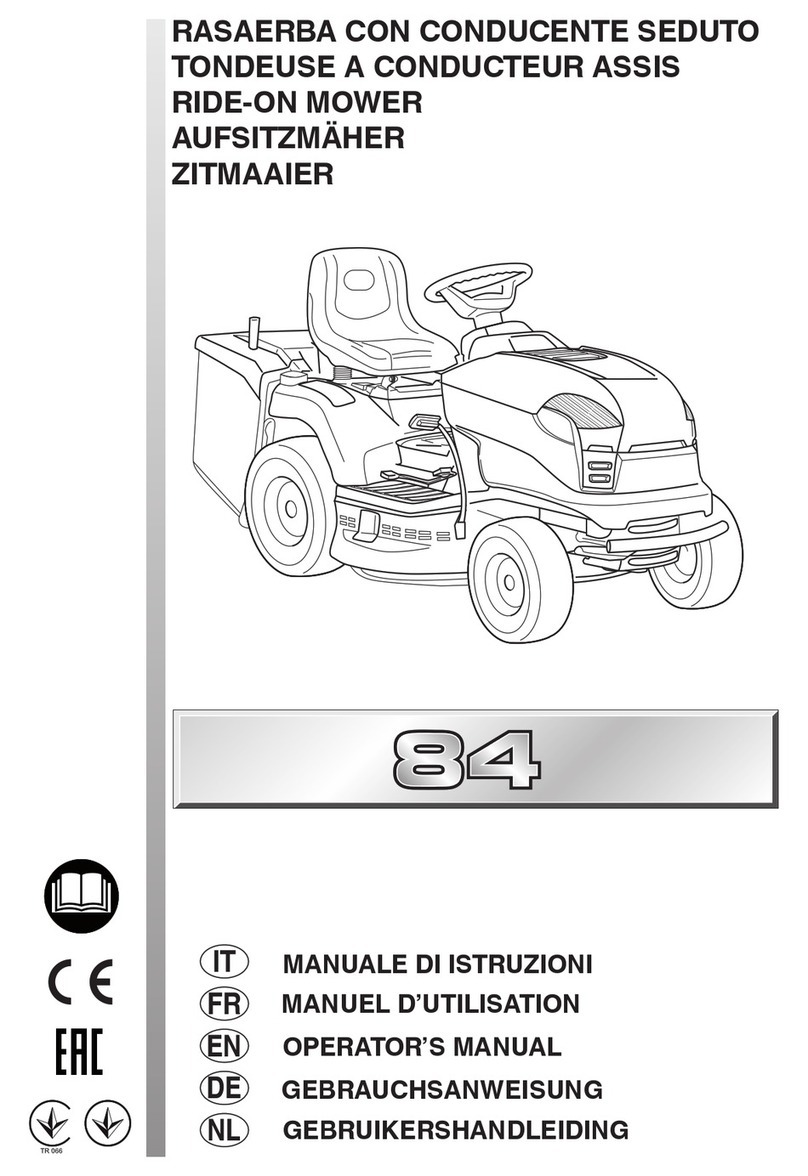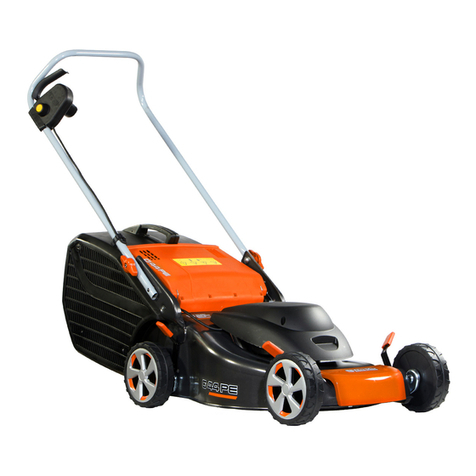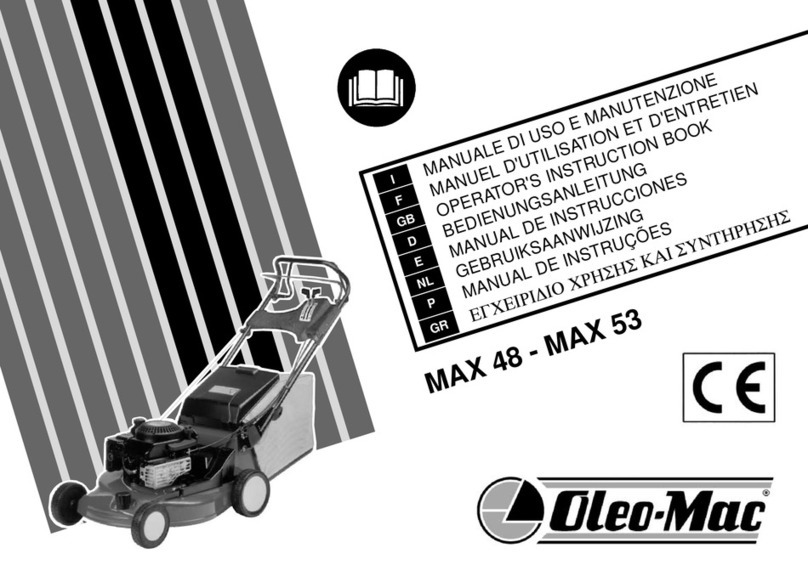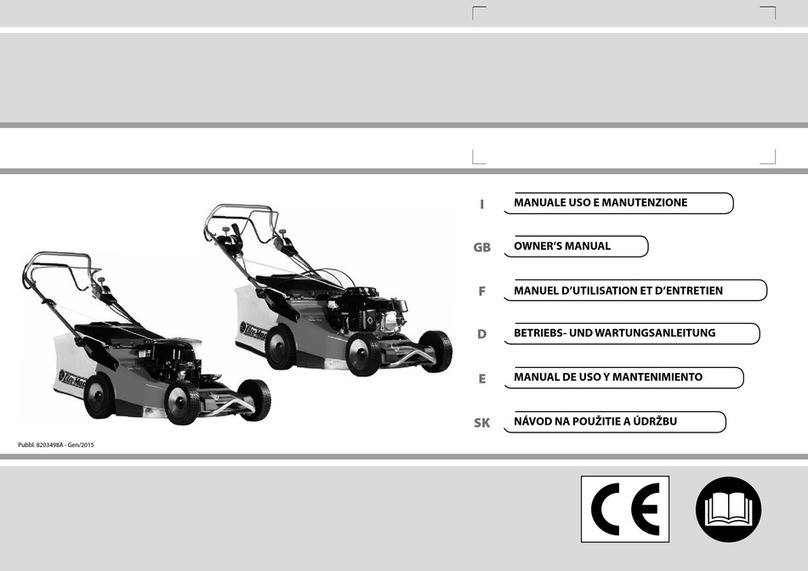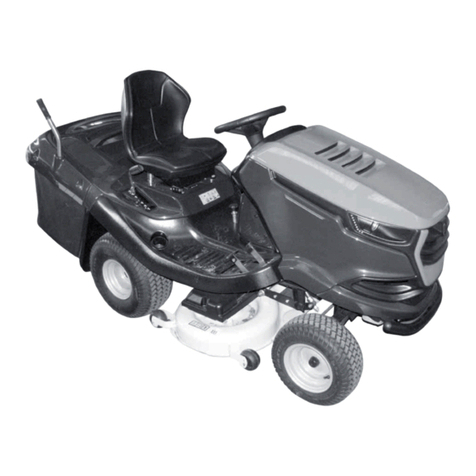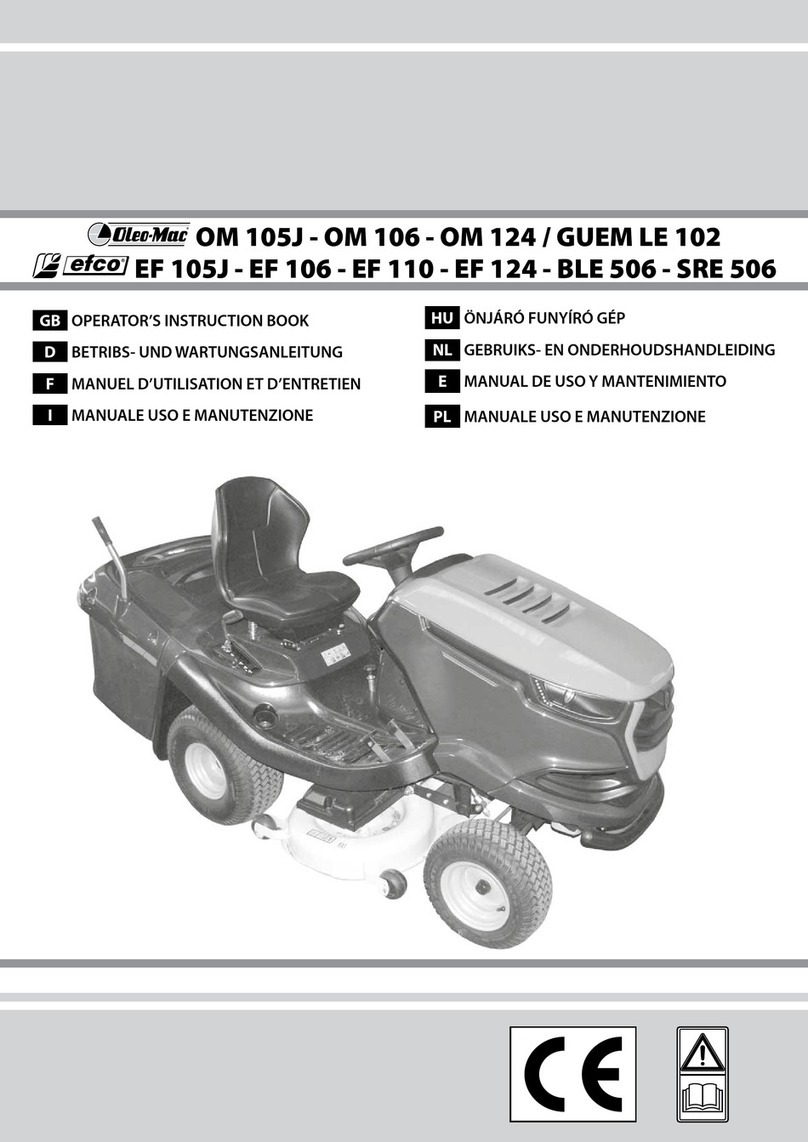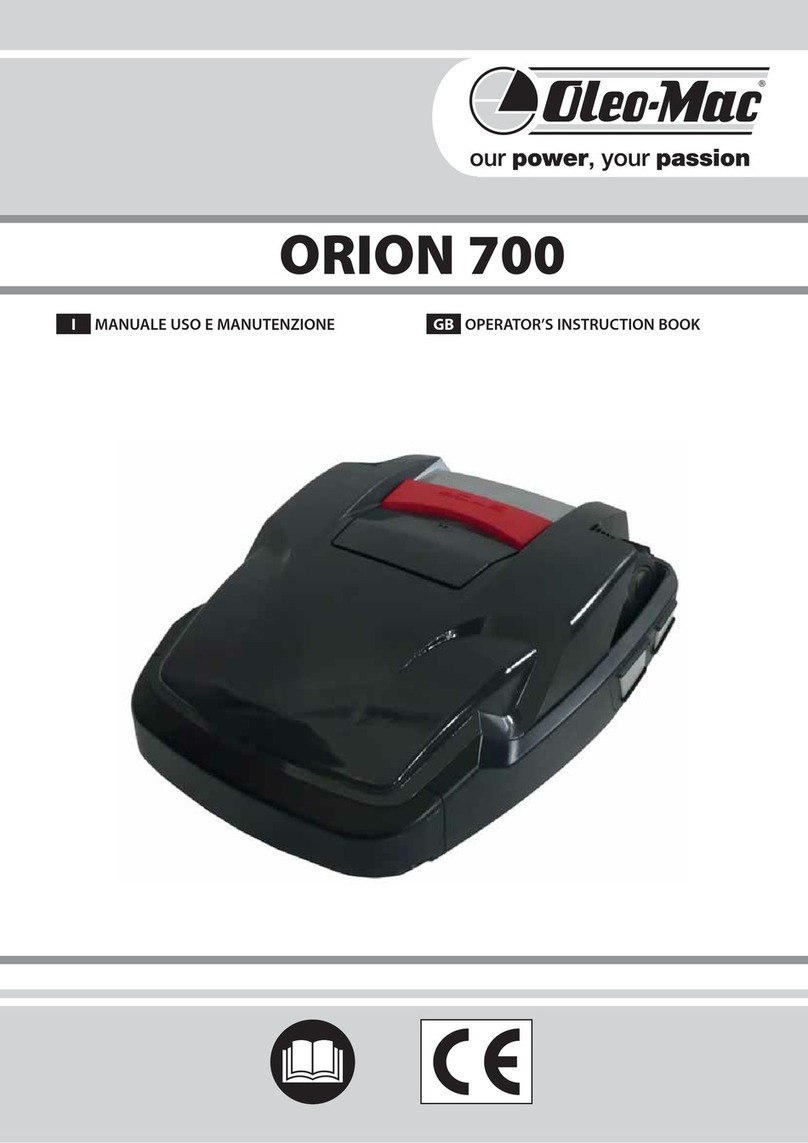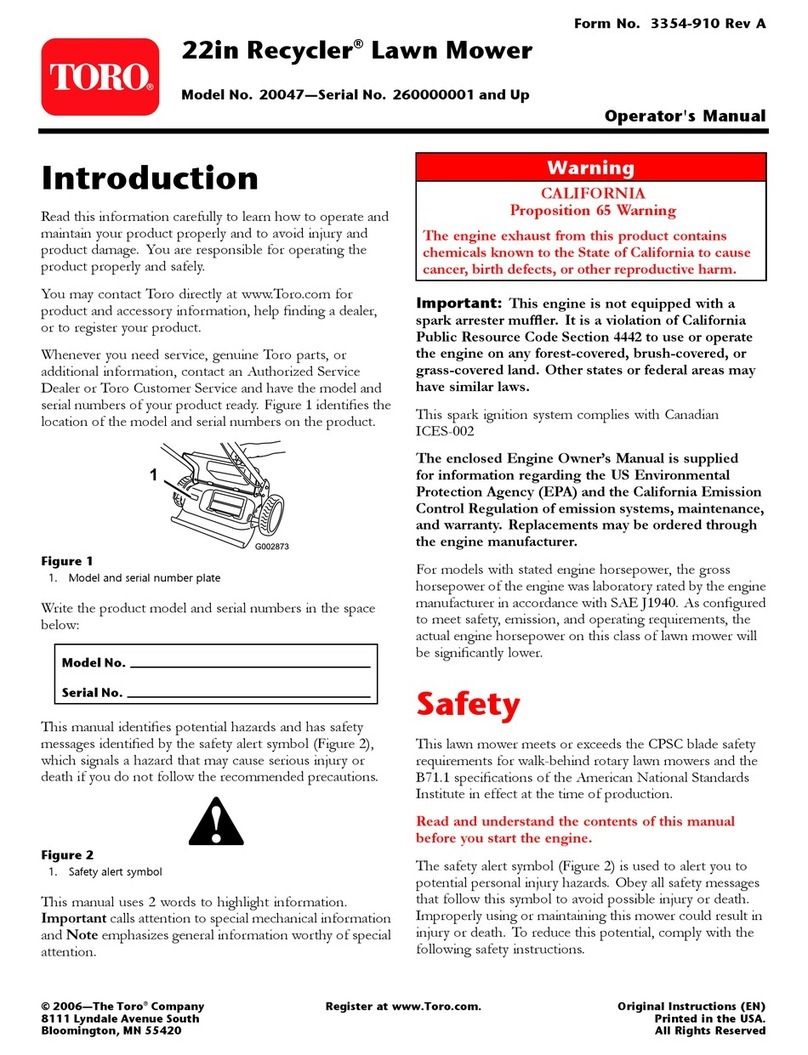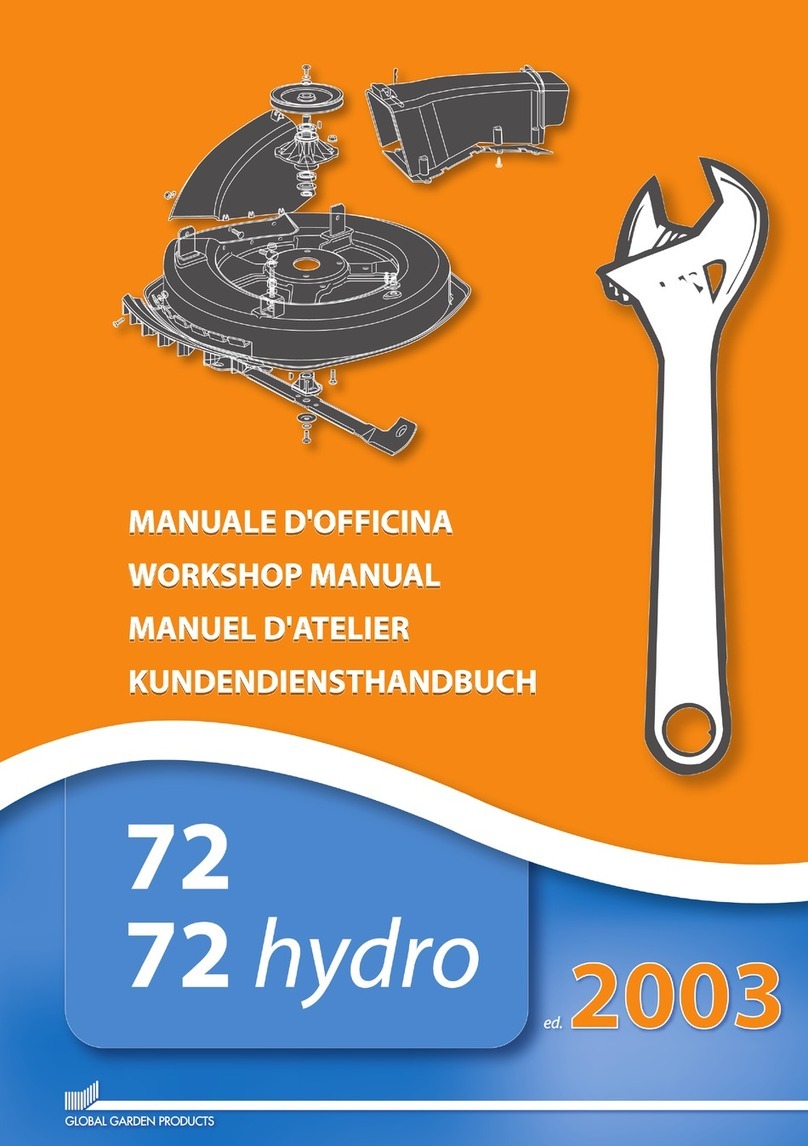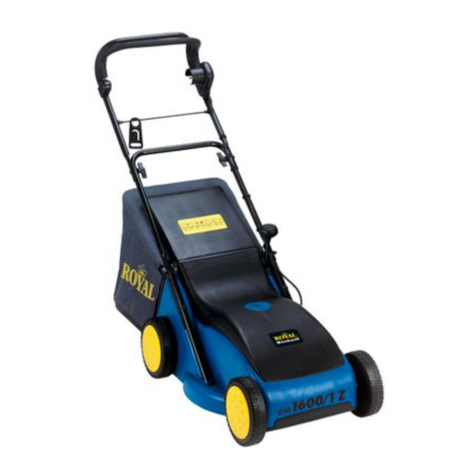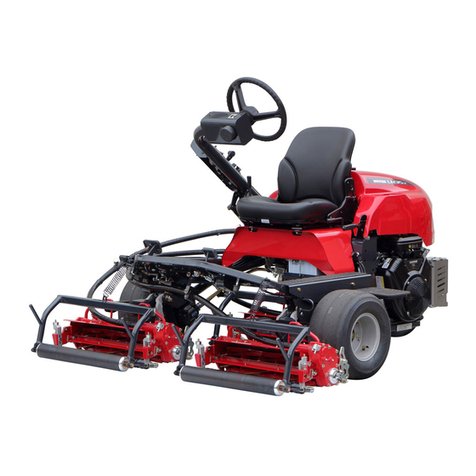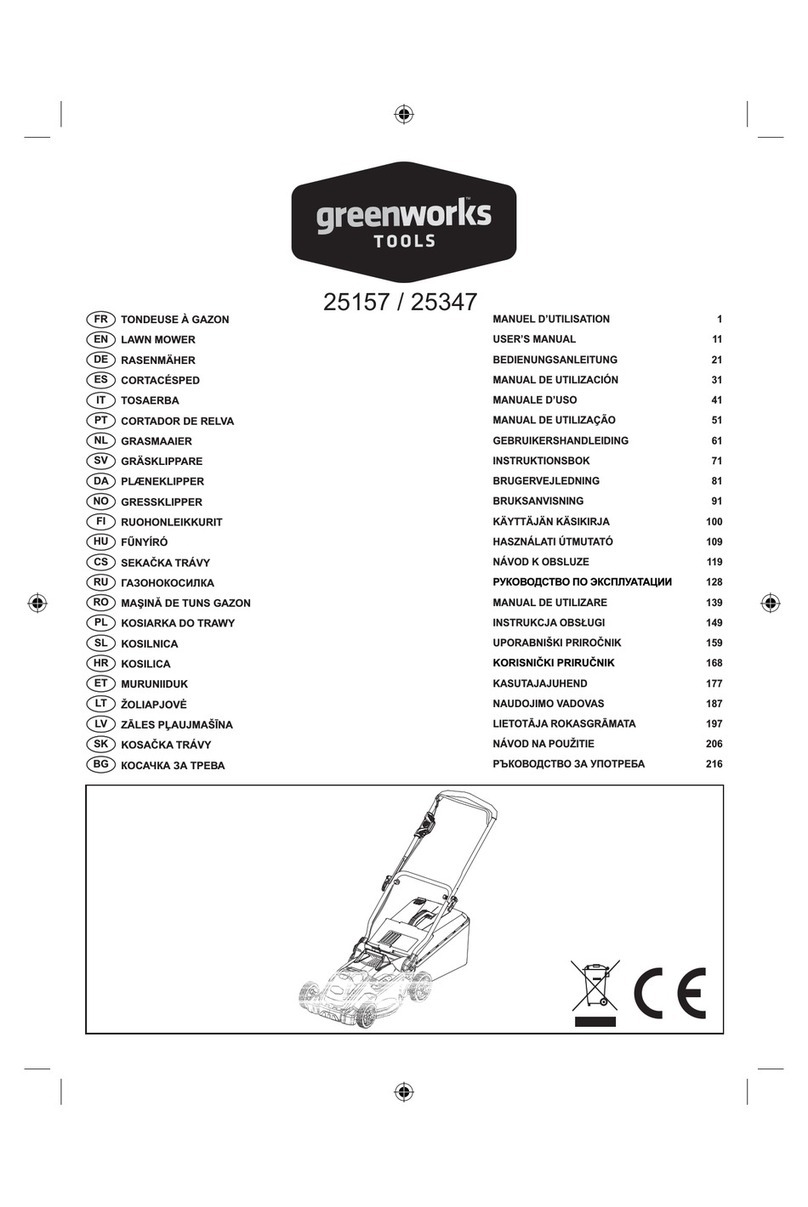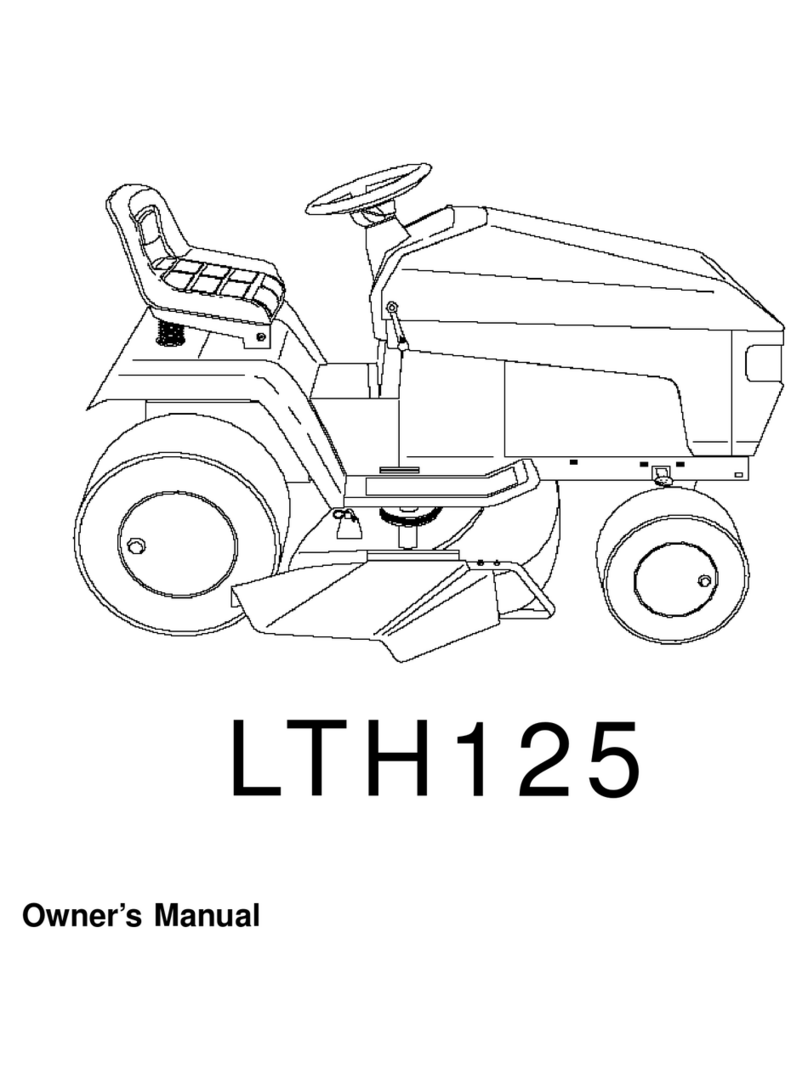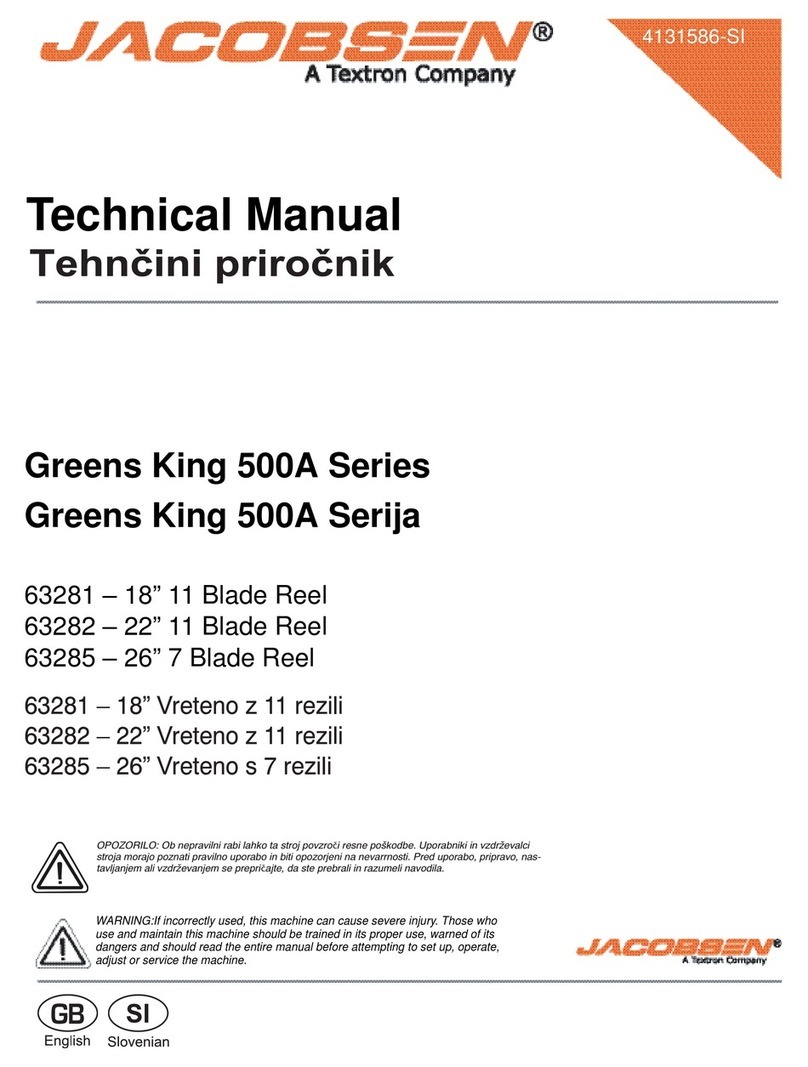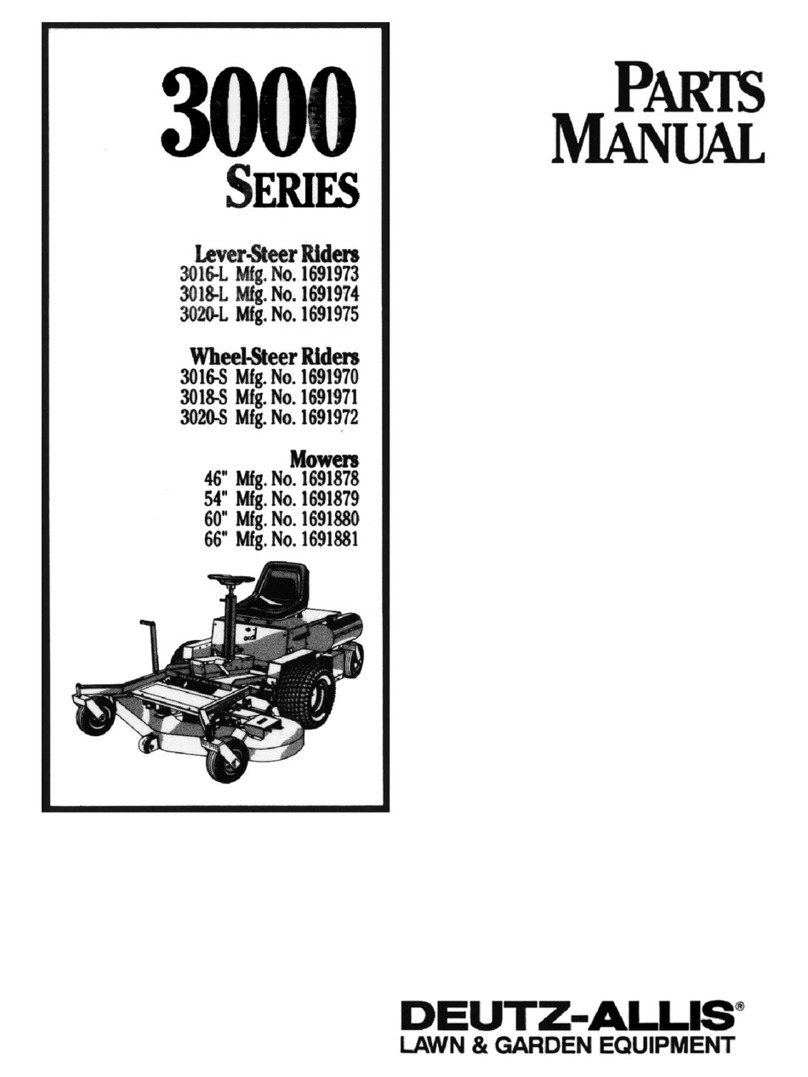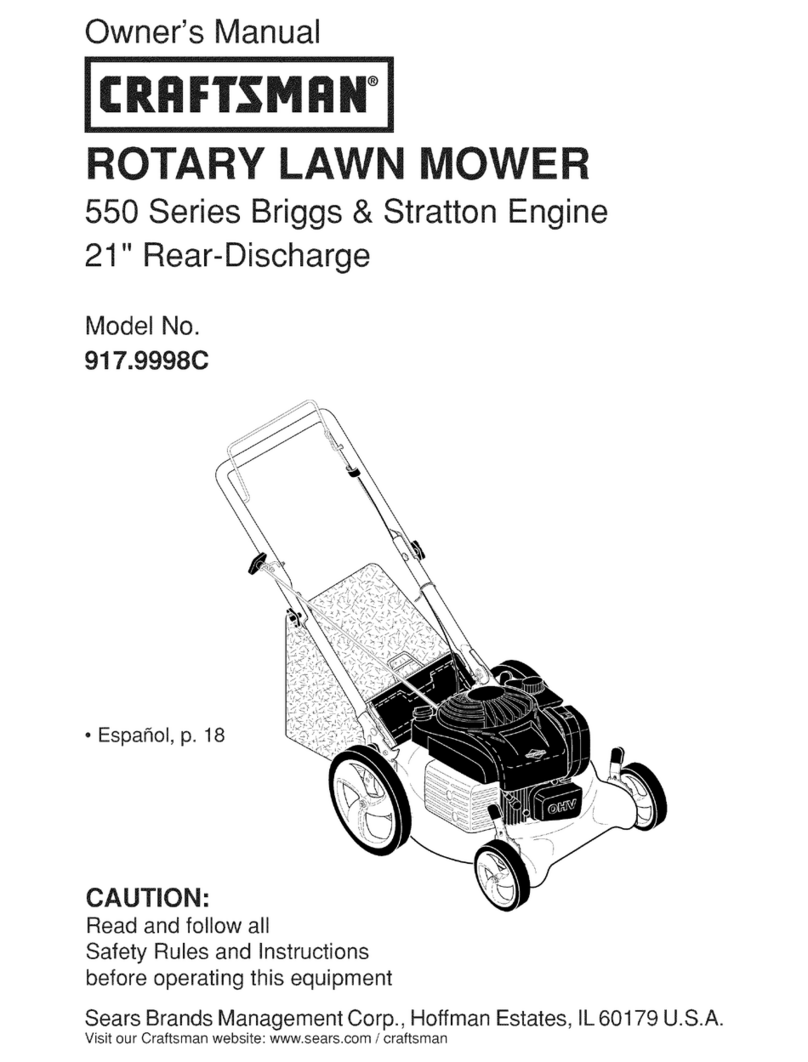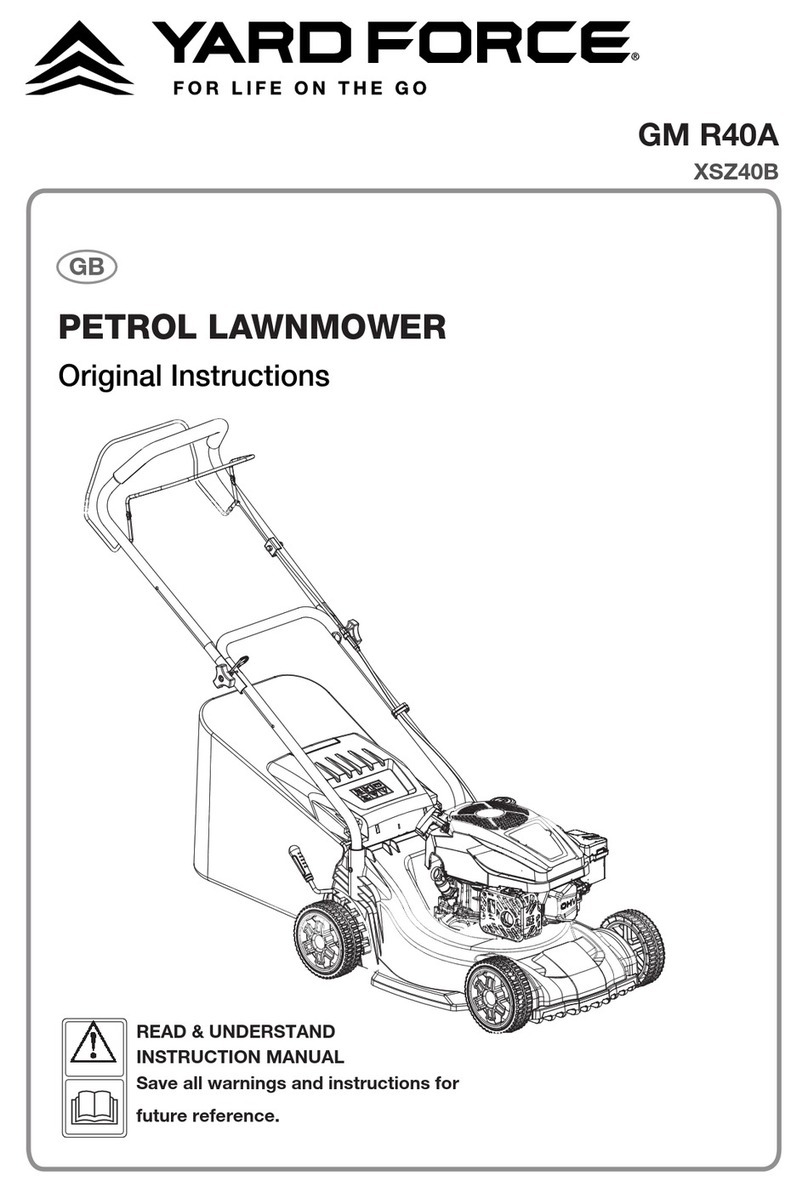
10
FOREWORD
Dear customer,
Thank you for purchasing this riding mower from Emak S.p.A., a company renowned both in Europe
and internationally as a manufacturer of quality mowers and accessories for the maintenance of grass
areas.
ABOUT THIS MANUAL
This manual should guide you through, in the most simple way possible, the safe installation, operation
and maintenance of your riding mower and provide information about its options and capabilities. It is
therefore intended for all persons that will come into contact with the riding mower during its installation,
operation and maintenance.
Please carefully study the manual before doing anything with the mower. Follow the instructions
contained in this user's manual precisely so that operating the mower is easier and that it is used
optimally and has a long lifetime.
SYMBOLS USED IN THIS USER'S MANUAL
SYMBOL MEANING
These symbols mean "ATTENTION" and "WARNING" they inform you about things that
may damage your mower and/or cause serious injury to the user.
This symbol indicates an important instruction, property, procedure or issue, which you need
to be aware of and adhere to during assembly, operation and maintenance of the mower.
This symbol indicates useful information relating to the mower or to its accessories.
This symbol is a reference to an image in the front part of the user's manual. It is always
accompanied by the number of the image.
This symbol is a reference to another chapter in this or another user's manual and most
often it is shown together with the number of the chapter to which it refers.
ESSENTIAL INFORMATION
This user's manual is an integral part of the riding mower that must be included with the mower in the
event that it is sold. For this reason, store it for future use.
Do not put the mower into operation until you have thoroughly read all the instructions,
restrictions and recommendations contained in this user's manual, paying particular attention
to the chapter "Safety of operation".
The illustrations and pictures contained in this user's manual may not always correspond to reality, their
purpose is the description of the main principles of the device.
WHEN IN DOUBT
In practice, unforeseeable situations frequently arise that cannot be included and described in this
user's manual. Therefore, if you are ever unsure about a procedure or if anything is unclear or you
have questions, do not hesitate to contact one of our more that 100 authorised, professionally-equipped
service centres located all over Europe, where trained and tested experts will be ready to assist you.

